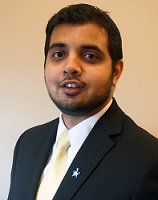 Bundled payments, whether maligned or sought after, are coming to healthcare. While this payment model seems relatively new, some programs have been successfully running for years.
Bundled payments, whether maligned or sought after, are coming to healthcare. While this payment model seems relatively new, some programs have been successfully running for years. Program Director Ali Poonawala shares the story of how ColonoscopyAssist, a bundled payments program for colorectal cancer screening, began.
By the numbers. The program began in 2009 and since then has spread from coast to coast. ColonoscopyAssist has:
• Centers in 35 states and more than 70 cities
• 100+ participating centers
• 200+ participating physicians
The program is built on a simple foundation: colorectal cancer screening colonoscopy for one flat, all-inclusive fee of $950.
How it works. Bundled payments, while much simpler from the patient perspective, can seem like a logistical nightmare to providers. In the case of ColonoscopyAssist, the bundled rate and process has already been created, interested surgery centers and providers need only to reach out. After undergoing the program's credentialing process, facilities are able to take advantage of the program's model.
The ColonoscopyAssist team works with each component of the bundled arrangement — physician, facility, anesthesia group and pathology group — separately. "We work with each independently, as if they are billing us for their portion," says Mr. Poonawala.
The $950 fee was created so the program could break even, which would require approximately 2,000 colonoscopies performed in a year.
Filling a non-profit role. ColonoscopyAssist was founded to make the procedure accessible and affordable for uninsured or high-deductible patients. If a patient cannot afford the $950 fee, an interest free payment plan is set in place. If a patient is below 250 percent of the federal poverty line, the program has grant funding it utilizes to offer the procedure at no cost. "I think, as opposed to any other contract payer, the reason a lot of physicians like our program is because it is philanthropic," says Mr. Poonawala.
If a patient requires follow-up care after the colonoscopy, because of a positive test result or other diagnosis, Colonoscopy Assist has a well-defined system in place. "We will help patients get their needed follow up care. We also assist them to apply for Medicaid or insurance and help them pay their first premium," he says. "The physicians and centers are limiting their liability."
Getting providers on board. Bundled payments typically imply a certain level of risk, but ColonoscopyAssist shoulders that burden. In addition to limiting physician and facility risk, the program helps providers expand their patient base. "The facility or physician is not expected to do any marketing," says Mr. Poonawala. "We refer patients to participating facilities."
In years past, there has been a great deal of provider resistance to this payment model, but this is becoming less and less true. The American Gastroenterological Association created a bundled payment model for physicians to consider and more payers are becoming interested. "As the market is moving, physicians, facilities and pathology groups are more receptive to working out a bundled deal," says Mr. Poonawala.
More articles on gastroenterology:
6 GI practices making headlines
Second chances: Would gastroenterologists still choose the same field?
76 gastroenterologist compensation statistics


